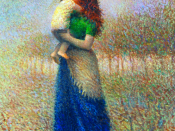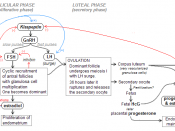Lifespan Development and Personality Paper � PAGE \* MERGEFORMAT �6�
Running head: LIFESPAN DEVELOPMENT AND PERSONALITY PAPER
Lifespan Development and Personality Paper
Jocelyn F. Oatman
University of Phoenix
Introduction to Psychology
PSY 103
Michelle Williams
October 22, 2008
�
�
Lifespan Development and Personality Paper
Development does not end with adolescence. Adults, too, go through modifications and experience physical, cognitive, and social changes. Adulthood has been suggested that emerges as early as 18, but for our purposes, adulthood can be divided into three periods: early adulthood (ages 20 to 39), middle adulthood (ages 40 to 65), and late adulthood (beyond age 65).
In young maturity, bodily development continues. Shoulder length, tallness, and chest range increase, and individuals continue to expand their physical capabilities. Through their mid-thirties practically everybody demonstrates some hearing injury, but for the majority of people, the years of young adulthood are the best part of life.
In the heart of adulthood, additional physical modifications slowly appear. The most familiar of those affect the extra loss of sensory sharpness. Individuals become more responsive to light, more precise at distinguishing dissimilarities in distance, and more slowly and less able at considering factors. At age 40, escalated farsightedness is usual, and glasses may be essential to rectify for it. In their late '40s or early '50s, women usually experience menopause, the shutdown of reproductive capacity. Estrogen and progesterone levels decline, and the menstrual cycle finally stops.
Most individuals are well into delayed adulthood before their physical functions illustrate
perceptible destruction. Nevertheless, within the body, bone mass is deteriorating, and the chance of heart disease is expanding. Male get smaller about an inch in height, and female about two inches, as their stance transforms and cartilage disks between the spinal column become thinner. Older adults tend to go to sleep...


